第15章 READING OF THE YOUNG(1)
Miss Hewins made a later report on the same subject [see the previous article]in a paper presented before the World's Library Congress in 1893.In this paper,given below,she has summarized several of the early yearly reports made at the meetings of the A.L.A.,all of which are of great interest as a record of the work of various libraries.
In the Government report on libraries,1876,the relation of public libraries and the young was treated by Mr.W.I.Fletcher,who discussed age-restrictions,direction of reading,choice of books,and incidentally the relation of libraries to schools,referring to librarians and trustees as "the trainers of gymnasts who seek to provide that which will be of greatest service to their men."The report was suggestive,and called for several radical changes in the usual management of libraries.No statistics were given,for none had been called for,and the number of libraries which were working in the modern spirit was not large.Mr.Green,in his paper at the Philadelphia conference of 1876(L.j.1:74),gave some suggestions as to how to teach school boys and girls the use of books,and in one or two of the discussions the influence of a librarian on young readers was noticed,but the American Library Association did not give much time to the subject till the Boston conference of 1879,when a whole session was devoted to schools,libraries,and fiction (L.j.4:319),the general expression of opinion being similar to the formula expressed in the paper by Miss Mary A.
Bean,"Lessen the quantity and improve the quality."In 1881,Mr.
J.N.Larned,of the Buffalo Young Men's Library,issued his pamphlet,"Books for young readers."The report on "Boys'and girls'reading"which I had the honor of making at the Cincinnati conference of 1882has answers from some 25librarians to the question "What are you doing to encourage a love of good reading in boys and girls?"(L.j.7:182.)Several speak of special catalogs or bulletins,most of personal interest in and friendship with young readers.One writes,"Give a popular boy a good book,and there is not much rest for that book.Librarians should like children."It was in 1883that,by the suggestion and advice of our lamented friend,Frederick Leypoldt,I published a little classified pamphlet,"Books for the young."In January of the same year the Library Journal began a department of "Literature for the young,"which was transferred at the end of the year to the Publishers'Weekly,where it still remains.The report on the subject,made for the Buffalo conference by Miss Bean,is on the same lines as the former one,with the addition of the experience of some smaller libraries.She says,"I believe the Lynn library has hit a fundamental truth,and applied the sovereign remedy,so far as the question concerns public libraries,in its 'one-book-a-week'rule for pupils of the schools."Miss Hannah P.James's report at the Lake George conference in 1885(L.j.10:278)sums up the information received from 75sources in some suggestions for work in connection with school and home,suggesting the publication of book lists in local papers,supervision of children's reading if authority is given by parents,and the limitation of school children's book to one or two a week.At the St.Louis conference of 1889Miss Mary Sargent reported on "Reading for the young"(L.j.14:226),One librarian fears that lists of books prepared for boys and girls will soon become lists to be avoided by them,on account of young people's jealous suspicion of undue influence.Sargent's "Reading for the young"was published just after the White Mountain conference of 1890,and the subject was not discussed in San Francisco in 1891or at Lakewood in 1892except in relation to schools.
The Ladies'Commission on Sunday school books is at least five years older than the American Library Association.It has done good service in printing lists of books specially adapted to Unitarian Sunday schools,others unfitted for them only by a few doctrinal pages or sentences,and a third class recommended as household friends on account of their interests,literary value,and good tone.The Church Library Association stands in the same relation to Episcopal Sunday schools,recommending in yearly pamphlets:
1.Books bearing directly on church life,history,and doctrine.
2.Books recommended,but not distinctly church books.
The Connecticut Ladies'Commission has,at the request of the Connecticut Congregational Club,published since 1881several carefully chosen and annotated lists.
The National Young Folks'Reading Circle,the Chautauqua Young Folks'Reading Union,and the Columbian Reading Union,the latter a Catholic society,the others undenominational,have published good lists for young readers.The Catholic Church also recommends many recent stories for children which have no reference to doctrines or differences in belief.
One hundred and fifty-two out of 160libraries have answered the following questions:
1.Are your children's books kept by themselves?
2.Are they classified,and how?
3.Have they a separate card catalog or printed finding list?
4.Are they covered?
5.Do you enforce rules with regard to clean hands?
6.Have you an age limit,and if so,what is it?
7.Do you allow more than one book a week on a child's card?
8.Are children's cards different in color from others?
9.What authors are most read by children who take books from your library?
10.What methods have you of directing their reading?Have you a special assistant for them,or are they encouraged to consult the librarian and all the assistants?
11.Have you a children's reading room?
Seventy-seven reply to the first question that their children's books are kept by themselves,22that stories or other books are separate from the rest of the library,and 53that there is no juvenile division.